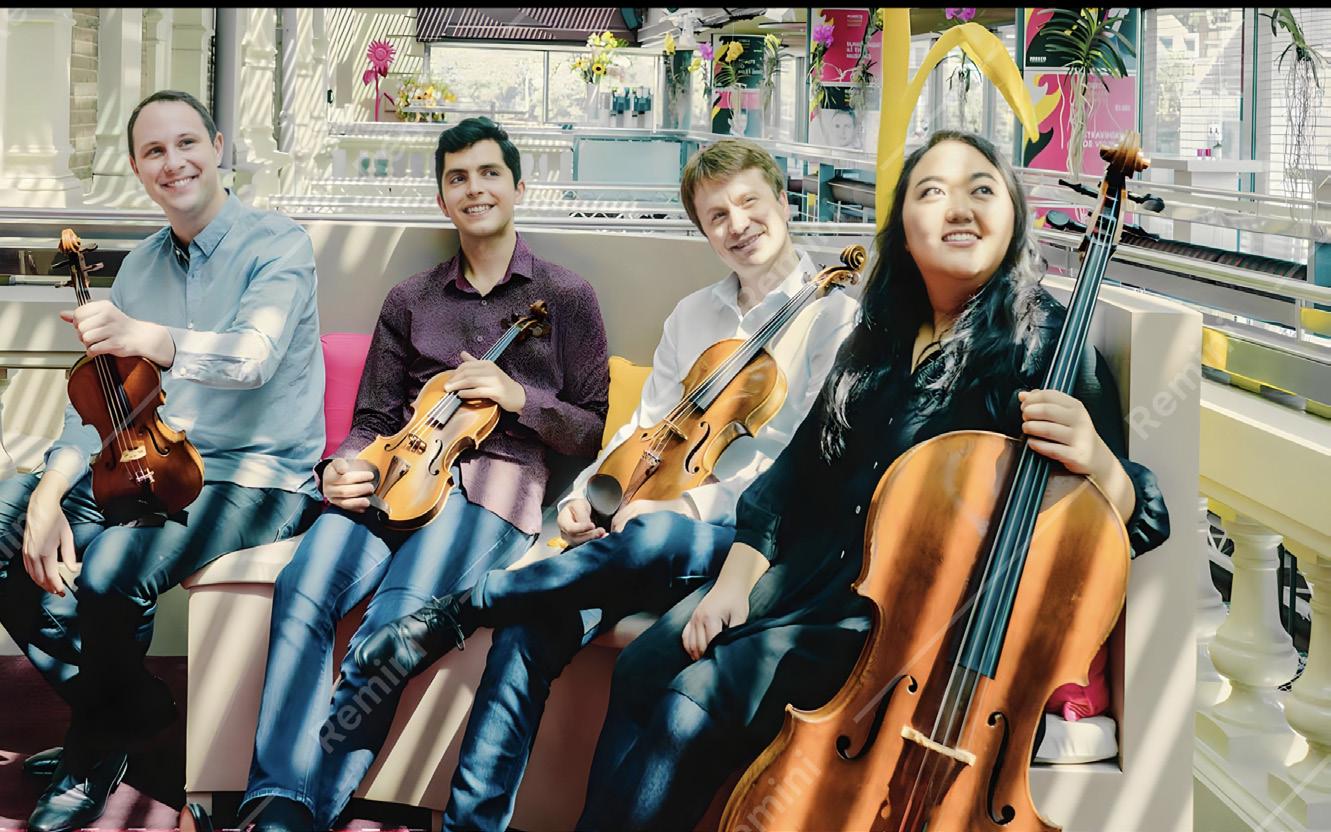
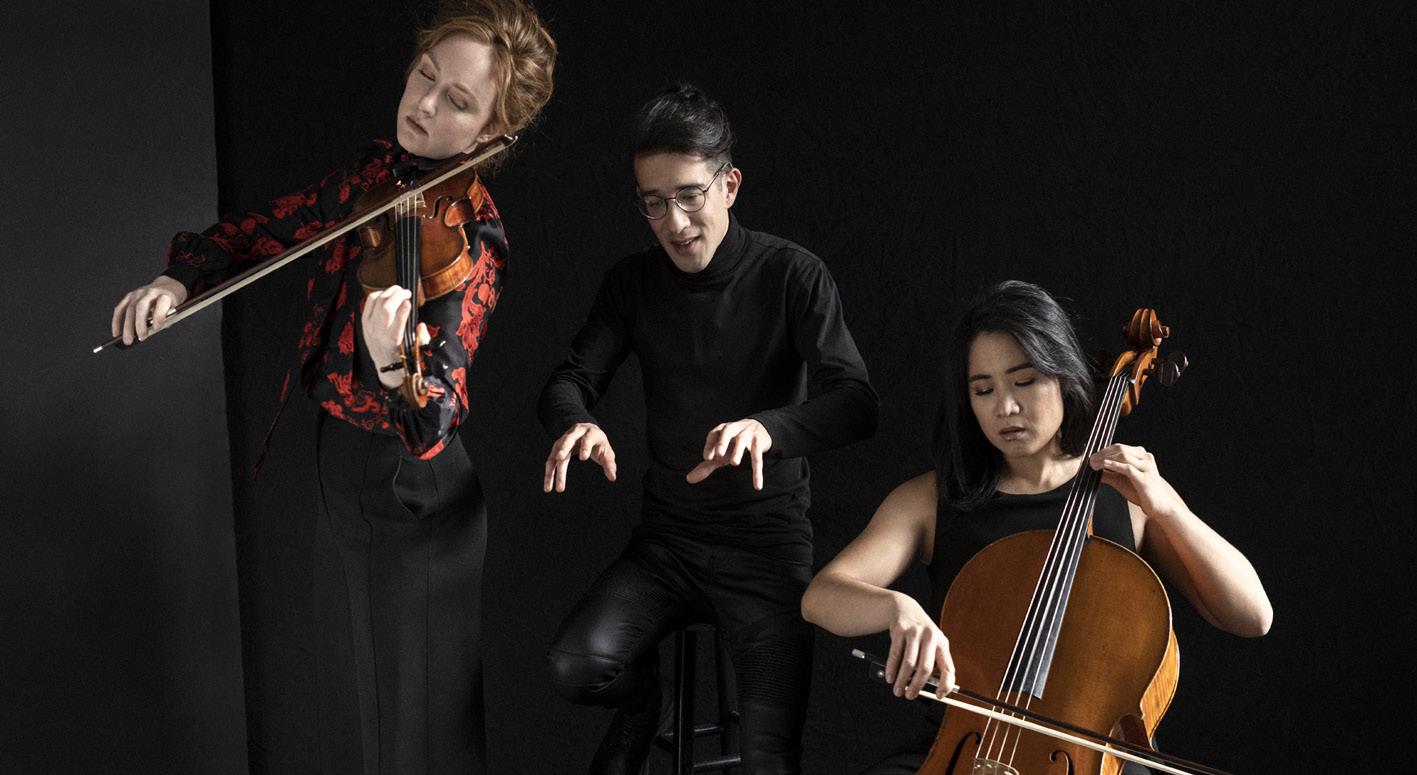


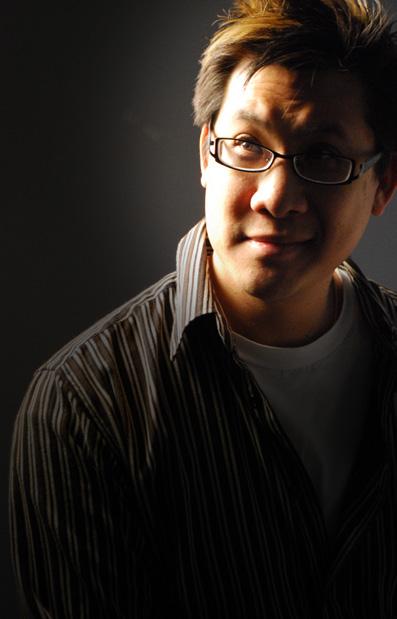
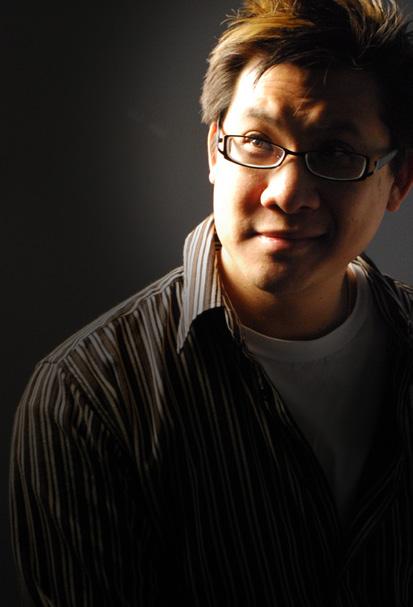
COLUMBUS Stay connected, visit ChamberMusicColumbus.org today! Merz Trio May 6, 2023 @ 7pm ANNIVERSARY Calidore String Quartet Apr 1, 2023 @ 7pm at the Southern Theatre WATKINS, composer KARIMAL ZAND,composer CHING-CHU HU, composer CHING-CHU HU, composer
LEAH WONG
182 E. Long Street
You and Me
CLIMATE CONVERSATIONS
Co-directors Amy Leibrand and Stephanie Rond
A PROJECT OF:
Art Spot is a series of temporary public art installations featuring 14 artists at 13 storefront window locations in and around downtown Columbus. The artwork, viewable 24/7, explores issues of climate change, conservation and the role of art in science communication.

ON VIEW UNTIL JUNE 30
ColumbusMakesArt.com/ArtSpot
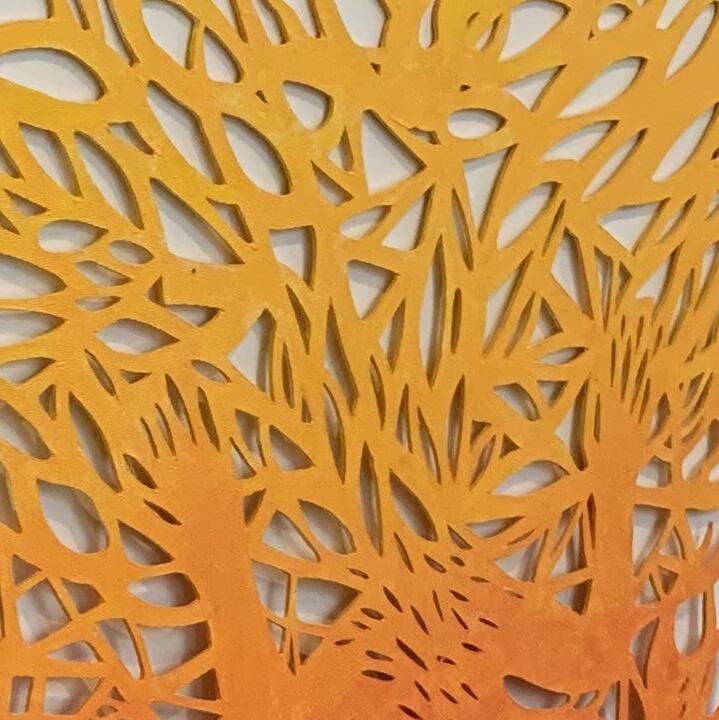
ADDITIONAL SUPPORT FROM:
CHAMPIONING ART AND ADVANCING CULTURE.
GCAC.ORG

 Photo: Ian Crumpler
Design: Formation Studio
Photo: Ian Crumpler
Design: Formation Studio
Welcome to the home stretch of our amazing 75th anniversary season

From planning to conclusion, it has been 24 months of working with our wonderful trustees, musicians, composers, sponsors, and community arts partners. We hope that you are enjoying the results and that you have been entertained and inspired.
You have definitely inspired us by returning to the Southern in increasing numbers after the pandemic. We’re also heartened by the growing success of our youth education and scholarship programs. This season we have had a record number of music educators, and their diverse student musicians, attend master classes and our concerts.
With every season we want to bring something special, to try harder, to do more, and do it better. Your loyalty and support energize and enable us to achieve those goals, and we are most grateful.
Our next season is almost set, and we’ll be announcing it in the spring. Thrilling performances by Chanticleer, St. Martin in the Fields, Meta4, and others will be here to launch us into our 76th season of presenting world-class chamber music to the Columbus metro.
In closing, please know that we want and need your ideas and feedback about our musical offerings, educational, and social programs. To share your thoughts, please contact me at kathy.jones @cmcolumbus.org.

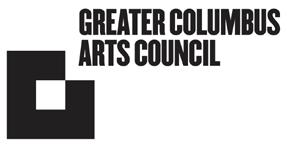
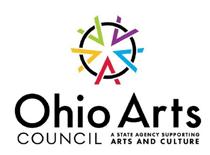



With best wishes for good health and that your days ahead are Allegro.
Katherine Borst Jones, President

1
Our Partners in the Arts
About Chamber Music Columbus
What is Chamber Music?
ANNIVERSARY
Chamber music once meant Western classical music performed by small ensembles without a conductor. Today, chamber music groups also perform many different types of music from all over the world featuring voices, electronic and acoustic instruments, and compositions by contemporary composers.
Our Mission
Chamber Music Columbus is a non-profit organization. The mission of Chamber Music Columbus is to enrich the collective cultural life of central Ohio through the love and celebration of chamber music, and by engaging the community through educational programming that elevates chamber music as an art form. We also promote the awareness and appreciation of chamber music in central Ohio.
How We Are Different
Since our founding in 1948, we have been a presenting organization. In other words, we do not have our own resident ensembles or orchestra. We fulfill our unique mission by inspiring the community through the presentation of renowned and promising chamber music ensembles from around the world. We usually present six different concerts a season at the historic and acoustically excellent Southern Theatre in downtown Columbus.
Our History
Chamber Music Columbus has evolved from an informal group of music lovers calling themselves Prestige Concerts in 1948 to today’s well organized and highly regarded organization. In 1983, Prestige Concerts renamed itself Columbus Chamber Music Society and took its present name, Chamber Music Columbus, in 2003. We are looking forward to you joining us as we celebrate our 75th anniversary.
Chamber Music Columbus Youth Education Programs
Chamber Music Columbus Scholarships
Chamber Music Columbus scholarships are merit and need-based awards given annually for the fall and winter semesters to talented young musicians studying with the Chamber Music Connection. The Chamber Music Columbus scholarship awards are intended to provide chamber music education for deserving students by offering financial assistance to full participation in Chamber Music Connection programs.
Master Classes and Residencies
Sponsored by Chamber Music Columbus, master classes and residencies with visiting artists are arranged for students and alumni of Chamber Music Connection. Master classes and residencies happen at local universities including Capital and OSU, and are free and open to the public for observation. For more information, visit ChamberMusicColumbus.org and CMConnection.org
2
The James N. Cain Legacy Society
James N. Cain founded Prestige Concerts, now known as Chamber Music Columbus, in 1948. Today, we cherish the same goal – bringing world class chamber music concerts to Columbus. Columbus area music lovers have reaped the benefits of Cain’s vision for 74 years. We invite you to ensure a strong and enduring chamber music legacy in the future by including the James N. Cain Legacy Society in your planned estate giving.
FOR MORE INFORMATION:
Please contact Steve Moore at smoore@columbusfoundation.org or call him at 614-325-1250. Chamber Music Columbus is a 501 (c)(3) organization. Your gift may be tax deductible. Please consult your tax advisor.
Board of Trustees
Katherine Borst Jones (President), Charles Warner (Vice President), Rosemary Ebner Pomeroy (Secretary), Steve Helmick (Treasurer), John Deliman, Cheryl Dring, Taylor Hallowell, David Hedgecoth, Lakeisha Hilton, Justin Johnston, Doug Jones, Mark Krausz, Cora Kuyvenhoven, Barbara McAdam Muller, Mike Nicholson, Karen Peeler, Deborah Barrett Price, Pat Reagan, Jay Weitz
Advisors to the Board of Trustees
Barbara Keller, Lillian Webb, Gabrielle Valladares, Denniray Muller, Kevin Wallick
Guest Tickets / Ticket Exchange
Each subscriber who purchased tickets by August 15, 2022 received a coupon for a free guest ticket to be used in the 2022-2023 season. Share this coupon with someone who would enjoy discovering our amazing concerts. To redeem your coupon, call CAPA 614-469-0939. Unable to attend a concert? Donate it to a lucky friend or call CAPA 614-469-0939 to exchange your ticket or donate it for a tax credit.
SIGN
UP for our E-News today and stay
Contact Us
Chamber Music Columbus PO Box 14445 Columbus, Ohio 43214
info@cmcolumbus.org
ChamberMusicColumbus.org

(614) 267-2267

TICKET SALES OFFICE: 614-469-0939 & CbusArts.com
FOLLOW US on Facebook, Instagram, & YouTube
3
up to date
events
Chamber Music Columbus is a proud member of promos!
on our upcoming concerts,
and
We gratefully acknowledge the generous support of those who enable our 75th anniversary celebration and our continuing mission to bring world class chamber music to central Ohio.
Composer Commissions and Sponsors
Composer Jaehyuck Choi was sponsored by The Ohio State University College of Arts and Sciences for a composition to be performed by VIVO.
Composer Ching-chu Hu was sponsored by Dr. Richard & Yvonne Heather Burry to compose a 75th anniversary theme to be arranged for each concert and for an opening performance by the American Brass Quintet.
Composer Libby Larsen was cocommissioned by Schubert Club of Minneapolis and Chamber Music Columbus for a composition to be performed by Bridget Kibbey and Alexi Kenney with sponsorship provided by Dan Jensen to celebrate the 75th anniversary of Chamber Music Columbus and the 140th anniversary of the Schubert Club of Minneapolis.
Composer Dr. Mark Lomax II was sponsored by the Peeler Family for a composition to be performed by the Cavani String Quartet and Louise Toppin, soprano.
Composer Korine Fujiwara was sponsored by Carole Wilhelm in memory of Robert G. Wilhelm Jr. for a composition to be performed by the St. Lawrence String Quartet.
Composer Huw Watkins was cocommissioned by Wigmore Hall and Chamber Music Columbus with sponsorship provided by Charles and Betsy Warner for a composition to be performed by the Calidore String Quartet.
Composer Karim Al-Zand was cocommissioned by Chamber Music Columbus and Chamber Music Houston for a composition to be performed by the Merz Trio.
The 75th Anniversary Donors
Pacesetters $10,000+
Yvonne & Richard Burry
OSU College of Arts & Sciences
Peeler Family
Charles & Betsy Warner
Carole Wilhelm IMO Robert Wilhelm
Anniversary Circle $5,000 - $9,999
Dan Jensen
Mark Krausz
Harold Moellering
Encore Circle $2,000 - $2500
Katherine Borst Jones & Fred Nyline
Rosemary Pomeroy Fund
Linda & Edward Royalty
Chamber Circle $1,000 - $1,999
Jack & Joan George
William & Linda Habig
Taylor Hallowell
Norma Hedgecoth
Edmund King
Anne Lapidus
Barbara McAdam Muller IMO Merv Muller
Karl Roth M.D.
Elizabeth Sawyers
Lillian Webb
Virtuoso $500 - $749
Robert Allen & Diane Weaver
Lucy & Jeff Caswell
Mark Crosby
Philip Graham
Tricia Herban
Brian Murphy
Patricia Callis & Jim Nicholson
Dorothy Noyes & Michael Krippendorf
Robert Redfield & Mary Yerina
Luke Shultz
Sheldon & Rebecca Taft
Accelerando $250 - $499
Cindy & John Deliman
Nancy Donoghue
Doris & Neil Edwards
Gideon Fraenkel
Sally & Kimberly Griffiths
Doug & Darlene Jones
4
Barbara Keller
Jeff Kipnis
David & Betty Meil
Mona Patel
Janice Sorenson
Fred & Marlene Suter
Jay Weitz & Esther Silverman
Overture $100 - $249
Henry Brecher
Yvonne & Richard Burry IMO Ed Tausk
Michael Burton
Alan Carter
Barbara Clapham
Byron & Barbara Ford
Diana Forest IHO Fran & Lillian Webb
John Fowble
Ann Grabowsky
Taylor Hallowell
David Hedgecoth
Lakeisha Hilton
Terry Huston
Barry Liss IMO Stella Kozyris
John Lozier
Jiyoung McCoy
Beverly McDonald
Ivan & Marianne Mueller
James Myers
Laura & Jim Myers
George & Dorothy Pilcher
Carole Poirier
Rosemary & Mark Pomeroy
David & Ann Rigney
Jim Roof
Michael & Tammy Sorenson
Phyllis Van Arsdale IMO Barbara Shafer
Sharon & Eric Walton
Craig & Carol Young
Donors to the 2022-2023 Annual Fund
Donations credited to the Annual Fund are those received from the start of our new season and fiscal year (July 1, 2022) to the end of the season (June 30, 2023).
Chamber Circle $1,000 - $2499
Robert Allen & Diane Weaver
Clark & Carole Anderson
Katherine Borst Jones
Matlin Foundation
Karl Roth M.D.
Virtuoso $500 - $750
Patricia Callis & Jim Nicholson
Lucy & Jeff Caswell
Tricia Herban
Anne Lapidus
Brian Murphy
George Schram
Lillian Webb
Accelerando $250 - $499
Gideon Fraenkel
Taylor Hallowell
David Hedgecoth
Norma Hedgecoth
Dan Jensen
Barbara Keller
David & Betty Meil
Fred & Marlene Suter
Overture: $100 - $249
Alan Carter
Esther Connors
Philip Graham
Sarah & David Hahn
Cora Kuyvenhiven & Martin Spencer
Barry Liss
Beverly McDonald
David & Ann Rigney
Paul Sanders
Nancy & James Skidmore
Sharon & Eric Walton
Craig & Carol Young
In Memory of Fred Nyline
Marilyn Harris
Barbara Keller
In Memory of David P. Lighthill
Carol Barnum
Wesley & Ann Harnish
Ann Pouch
5
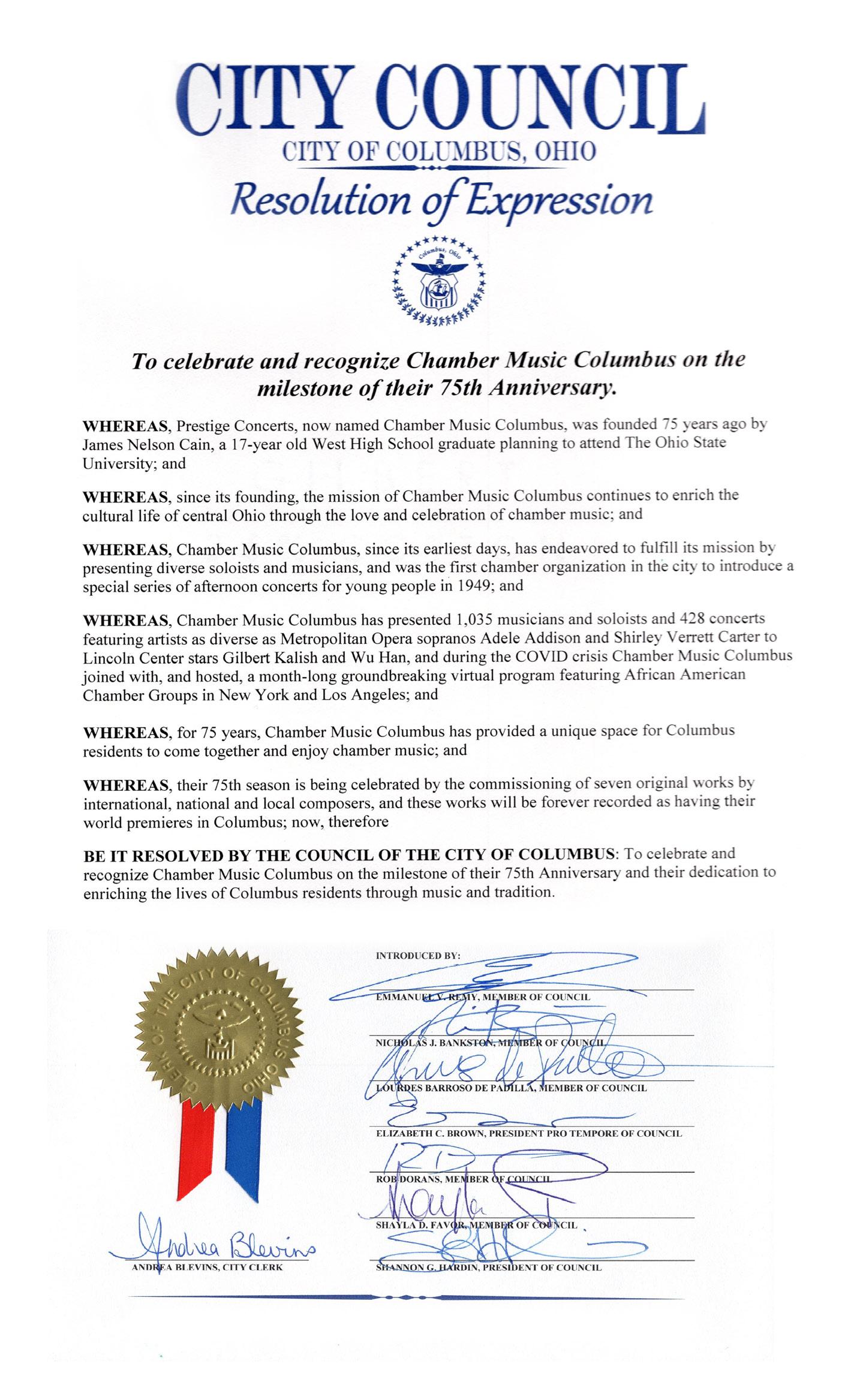
66
Since our founding in 1948, we have presented...

1,035 Musicians & Soloists
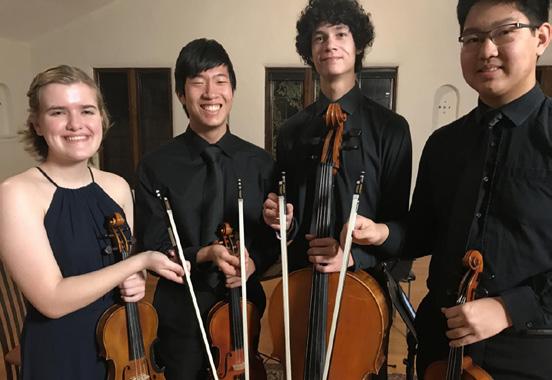
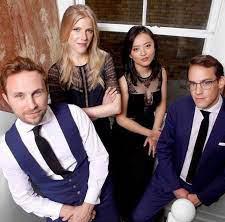
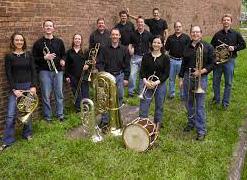
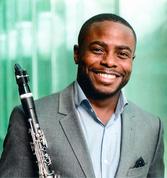
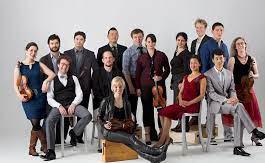
428 Amazing Concerts and 74 Seasons...


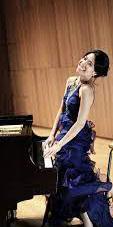

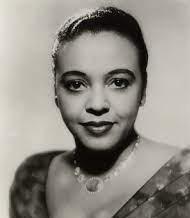
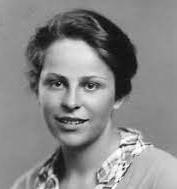
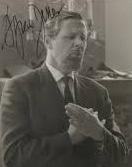
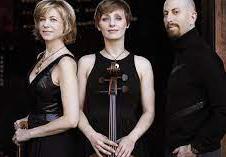

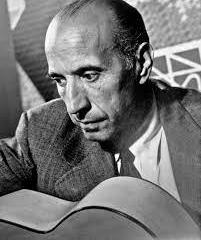
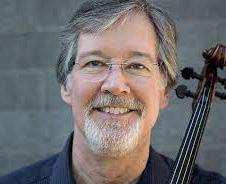


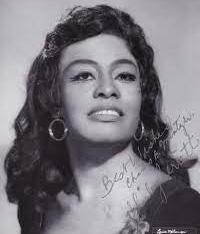


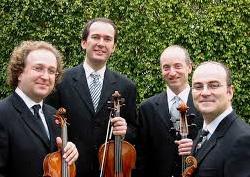
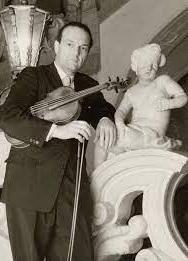
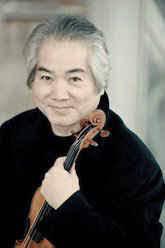
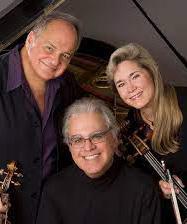
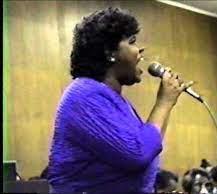
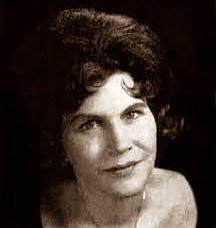


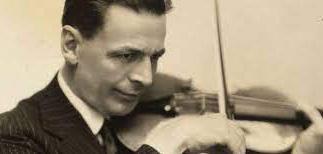

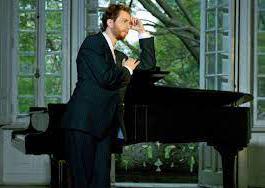


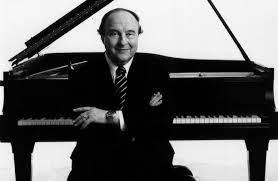
Presenting The
Calidore String Quartet
CALIDORE STRING QUARTET - Saturday, April 1, 2023, 7:00 p.m. - Southern Theatre
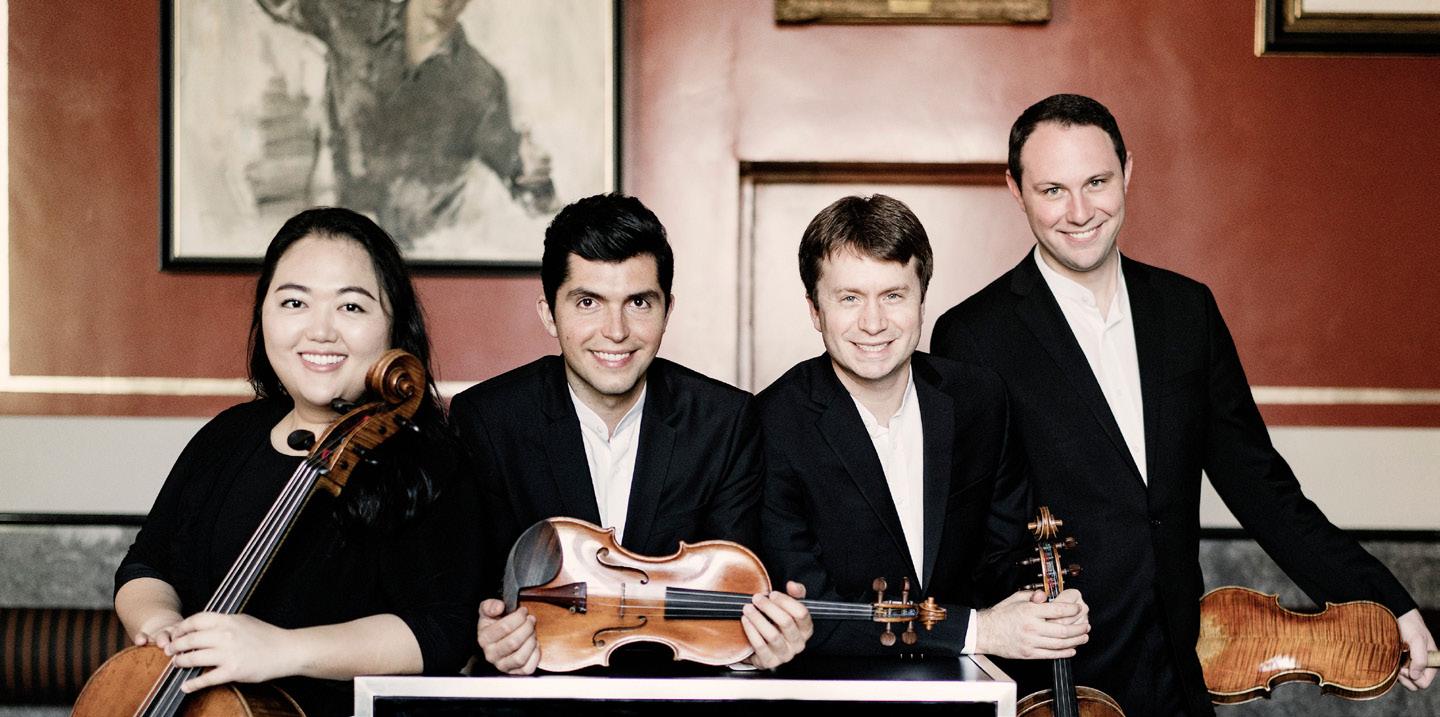
PROGRAM
Jennifer Hambrick, Poet Laureate
Ching-chu Hu (born 1969)
A Wondrous Hope: a fanfare to celebrate the 75th season of Chamber Music Columbus (composed 2022) World Premiere
Wolfgang Amadeus Mozart (1756-1791)
Quartet in B-flat major, K. 458 (“The Hunt”) (composed 1784)
Allegro vivace assai
Menuetto: Moderato
Adagio
Allegro assai
Huw Watkins (born 1976)
Quartet no. 2 (composed 2021-2022) United States Premiere Co-commissioned by Wigmore Hall, London, and Chamber Music Columbus
Allegro molto
Andante lento
Allegro molto
INTERMISSION
Ludwig van Beethoven (1770-1827)
Quartet in F major, op. 135 (composed 1826)
Allegretto
Vivace
Lento assai, cantante e tranquillo
Der schwer gefasste Entschluss: Grave, ma non troppo tratto; Allegro
The Calidore String Quartet is presented through special arrangement with IMG Artists, 7 West 54th Street, New York, New York 10019.
8
Estelle Choi, cello; Ryan Meehan, violin; Jeremy Berry, viola; Jeffrey Myers, violin
Calidore String Quartet
ABOUT THE ARTISTS:
Performances of the Calidore String Quartet are renowned for their “deep reserves of virtuosity and irrepressible dramatic instinct” (New York Times). Their unique “balance of intellect and expression” (Los Angeles Times) is complemented by the feeling that “four more individual musicians are unimaginable, yet these speak, breathe, think and feel as one” (Washington Post). After over a decade of performances and residencies in the world’s most esteemed venues and festivals, the release of numerous critically acclaimed recordings and lauded with significant awards, the Calidore String Quartet is recognized as one of the world’s foremost interpreters of a vast repertory; from the cycles of quartets by Beethoven and Mendelssohn to works of celebrated contemporary voices like Grygory Kurtag, Jörg Widmann, and Caroline Shaw.
In their most ambitious recording project to date, the Calidore are amidst recording the complete cycle of Beethoven’s String Quartets for Signum Records. The recording will involve multiple releases beginning in March 2023. The 22-23 season includes debuts in the Concertgebouw Amsterdam, Prague, Madrid, Vancouver, and Key West. Their concert activities also see returns to Wigmore Hall, Kennedy Center, Copenhagen, Florence, Montreal, St. Paul, Houston, and Los Angeles. In September 2022, the Calidore performed at Carnegie Hall with violinist Anne-Sophie Mutter, in a memorial concert honoring the late composer Andre Previn. They also enjoy collaborations this season with the Emerson Quartet, clarinetist Anthony McGill, bassist Xavier Foley, violist Matthew Lipman, harpist Bridget Kibbey, and pianists Ivo Kahanek and Sophiko Simisive.
Recipient of a 2018 Avery Fisher Career Grant and a 2017 Lincoln Center Emerging Artist Award, the Calidore String Quartet first made international headlines as winner of the $100,000 Grand Prize of the 2016 M-Prize International Chamber Music Competition. The quartet was the first and only North American ensemble to win the Borletti-Buitoni Trust Fellowship, was a BBC Radio 3 New Generation Artist, and is currently in residence with the Chamber Music Society of Lincoln Center.
Highlights of recent seasons have included performances in major venues throughout North America, Europe, and Asia including Carnegie Hall, Wigmore Hall, the Kennedy Center, Konzerthaus Berlin, Brussels’s BOZAR, Cologne Philharmonie, Seoul’s Kumho Art Hall, and at significant festivals including the BBC Proms, Verbier, Ravinia, Mostly Mozart, Music@Menlo, Rheingau, East Neuk, and Festspiele Mecklenburg-Vorpommern.
The Calidore has given world premieres of works by Caroline Shaw, Hannah Lash, and MarkAnthony Turnage among others. Its collaborations with esteemed artists and ensembles include Jean-Yves Thibaudet, Marc-André Hamelin, Joshua Bell, David Shifrin, Inon Barnatan, Lawrence Power, Sharon Isbin, David Finckel, and Wu Han. The Calidore has collaborated and studied closely with the Emerson Quartet and Quatuor Ébène, and has also studied with Andre Roy, Arnold Steinhardt, Günter Pichler, Guillaume Sutre, Paul Coletti, and Ronald Leonard.
9
Calidore String Quartet

As a passionate supporter of music education, the Calidore String Quartet is committed to mentoring and educating young musicians, students, and audiences. In 2021 the Calidore joined the faculty of the University of Delaware School of Music and serve as directors of the newly established Graduate String Quartet Residency. Formerly, they served as artist-in-residence at the University of Toronto, University of Michigan, and Stony Brook University.
The Calidore String Quartet was founded at the Colburn School in Los Angeles in 2010. Within two years, the quartet won grand prizes in virtually all the major US chamber music competitions, including the Fischoff, Coleman, Chesapeake, and Yellow Springs competitions, and it captured top prizes at the 2012 ARD International Music Competition in Munich and the International Chamber Music Competition Hamburg. An amalgamation of “California” and “doré” (French for “golden”), the ensemble’s name represents its reverence for the diversity of culture and the strong support it received from its original home: Los Angeles, California, the “golden state.”
The Calidore String Quartet is presented through special arrangement with IMG Artists, 7 West 54th Street, New York, New York 10019.
10
Ching-chu Hu, composer

Ching-chu Hu (born Iowa City, Iowa, 1969)
A Wondrous Hope: a fanfare to celebrate the 75th season of Chamber Music Columbus (composed 2022)
Born in 1969 in Iowa City, Iowa, Ching-chu Hu brings his first-generation Chinese American identity to conducting, playing piano, and composing. As he told interviewer Sam Jacobson, “I grew up in the United States, but in a Chinese household where I was speaking Chinese. And the music that was around me that my parents would play was a combination of Chinese folk song, Chinese opera, and Western symphonies. Some of those influences come through, depending on the piece and depending on what the piece is for.”
Hu is the Richard Lucier Endowed Professor of Music at Denison University, director of its music theatre, and director of its famed Vail Series. He has studied at Yale University, Freiburg Musikhochschule in Germany, and University of Iowa, receiving his Doctor of Musical Arts in Composition at University of Michigan. Among his numerous honors, Hu was an Aaron Copland Fellow at the MacDowell Colony for the Arts, composer-inresidence at the Piccolo Spoleto Festival, guest composer at the American Music Week Festival in Sofia, Bulgaria, and winner of the 2018 American Prize for Chamber Music.
Commissioned by Chamber Music Columbus to compose the unifying musical theme for its 75th anniversary season, Hu composed “A Distant Hope.” As Hu described in his notes, the work “honors the role of music and hope in our lives. While celebratory as a fanfare, it also deconstructs the various aspects of a fanfare in today’s uncertain world –its excitement, its anticipation, balanced with its repose.”
Hu writes the following about “A Wondrous Hope,” the fourth piece of the puzzle that is the full two-movement “A Distant Hope:”
“A Wondrous Hope,” composed for the Calidore String Quartet in celebration of Chamber Music Columbus’ 75th season, honors their amazing artistry. Each spring season brings joy, wonder, and hope for new energy and vitality. The lines of this fanfare build upon and support one another, culminating to a “blossoming” of energy.
”A Wondrous Hope” is inspired by the fanfare, “A Distant Hope,” that opened this concert season.
“A Distant Hope” received its world premiere by the American Brass Quintet on October 8, 2022. This is the world premiere performance of “A Wondrous Hope.”
11
Calidore String Quartet
Wolfgang Amadeus Mozart (born Salzburg, January 27, 1756; died Vienna, Dec. 5, 1791) Quartet in B-flat major, K. 458 (“The Hunt”) (composed 1784)
The Haydn-Mozart nexus was decidedly a two-way street, in terms both of respect and of influence. The two had met in Vienna in 1781, but their cross-fertilization had already brought forth fruit a decade earlier when the young prodigy’s Symphony in D major, K. 133 evidenced clear signs of pollination from Haydn. By the time the two met face-to-face, Haydn had pretty much abandoned his operatic career in acknowledgement of Mozart’s superior abilities in that realm.
Arising from Mozart’s own need to pay tribute to his mentor rather than from the usual commission, the six quartets dedicated to Haydn (1782-1785) were modeled on the dedicatee’s “Russian” Quartets, op. 33, from 1781. They were no mere imitations, however, as even Haydn recognized.
Completed on November 9, 1784, this fourth of the “Haydn” Quartets is possibly the most spirited of the six. Its nickname, The Hunt, derives from the distinctive horn signal of the opening theme. Ironically, that particular motif is closer to a military fanfare than a conventional hunting call. The development treats a variant of the horn signal and a trilling idea from the exposition’s transitional passage. Foreshadowing Beethoven, the extended coda acts as a kind of second mini-development.
Placing the dance movement in the second rather than its more common third position, Mozart contrasts an orthodox minuet with a trio distinguished by its staccato middle-voice accompaniment. The uncertain opening of the Adagio leads to a stirring dialogue between the first violin and cello with a chromatic accompaniment. Not for another fifty or sixty years would such an effect become a musical commonplace.
The resolute rhythms and unexpected shift in harmony of the sonata-form finale combine with a contrapuntal exuberance that seems to have touched Haydn. At the February 1785 premiere of this quartet, he gushed to Wolfgang’s father Leopold: “Your son is the greatest composer known to me either in person or by reputation. He has taste and, what is more, the most profound knowledge of composition.” To prove that he valued the tribute and returned the respect, some seven months later Mozart sent to Haydn the six quartet manuscripts, inscribed to their spiritual grandfather.
12
Huw Watkins, composer
Huw Watkins (born Pontypool, Wales, July 13, 1976)
Quartet no. 2 (composed 2021-2022)
Born in Pontypool, in southeastern Wales, Huw Watkins studied piano at Chetham’s School of Music in Manchester under Peter Lawson (born 1950) from 1992 to 1994. Moving on to King’s College, Cambridge in 1994, Watkins took on composing under the instruction of Robin Holloway (born 1943) and Alexander Goehr (born 1932). In 1997, Watkins continued the study of composition at London’s Royal College of Music under Julian Anderson (born 1967), who encouraged him to write in his own style rather than to follow the fashionable models of the time.
While studying at the Royal College of Music in 2001, Watkins was a recipient of the Constant and Kit Lambert Junior Fellowship, which helps students with living expenses and educational fees. In 2011, Watkins’ “Five Larkin Songs” won a British Composer Award in the vocal category. He won the Chamber Music Society of Lincoln Center’s Elise L. Stoeger Prize in 2016. In 2021, Watkins was appointed as a Member of the Order of the British Empire for his service to music.

Watkins’ “Quartet no. 2” received its world premiere by the Calidore String Quartet on May 16, 2022, in London’s Wigmore Hall, which co-commissioned the work with Chamber Music Columbus. The three-movement work opens with its initial “Allegro molto,” in which the first violin trips along freely. The “Andante lento” slows things down at first but gradually gains momentum. The finale, a second “Allegro molto,” resumes the spirit of the opening movement. This performance is the United States premiere of “Quartet no. 2.”
Composer Huw Watkins was co-commissioned by Wigmore Hall and Chamber Music ColumbuswithsponsorshipprovidedbyCharlesandBetsyWarnerforacompositionto beperformedbytheCalidoreStringQuartet.
13
Calidore String Quartet
Ludwig van Beethoven (born Bonn, December 16, 1770; died Vienna, March 26, 1827) Quartet in F major, op. 135 (composed 1826)
After completing his Symphony no. 9, op. 125 in 1824, Beethoven devoted almost the entire remainder of his compositional life to the medium of the string quartet. Written in half the time it usually took him to write a quartet (from July to October of 1826), Opus 135 would be Beethoven’s last complete work, conceived in the aftermath of his nephew Karl’s suicide attempt and in the foreshadow of his own impending death. Only the new finale to the String Quartet, op. 130, replacing the original last movement, the Grosse Fuge, was finished later, in November.
The darkness of the viola’s opening phrase is scoffed at by the jocular little twitch in the first violin. These two fragments and the fluid second theme dominate this meditative Allegretto, recalling the humor of Haydn and the symmetry of Mozart. The syncopated Vivace has been described by the critic Basil Lam as “perhaps the most disquieting movement in the [Beethoven] quartets” for its impulsive mockery, its long unison passages, and its startling shifts in harmony. An insistent ostinato beneath the wild jig in the first violin marks the trio of this scherzo. It is interesting to note that the British composer Ralph Vaughan Williams, never a particular admirer of Beethoven, appropriated two prominent features of this scherzo as Satan’s victory dance in his 1930 “masque for dancing,” Job.
Beethoven called the expansive theme and variations of the third movement “Sweet song of repose or peace.” The poignant theme is followed by a lighter and ornamented first variation. The second is freer but hesitant; the third, lighter still and notable for its canonic features. The fourth flows gently with only the barest outline of the theme remaining; the coda sighs to a conclusion.
Translated roughly as “The difficult decision,” the finale has prompted countless explanations for the little epigraph Beethoven wrote in his sketchbooks: “Muss es sein? Es muss sein!” (“Must it be? It must be!”) Some theorize an exchange where the composer tried to avoid paying his rent, a performer trying to purchase the rights to one of his quartets, or even his annoyance at having to write a finale at all. The Grave section poses the musical question, the Allegro both answers it and puts it into comic perspective. The spirit of this answer has suggested to some that the solution to the riddle of the title is simply Beethoven’s resignation to his fate.
ProgramnotesbyJayWeitz,SeniorConsultingDatabaseSpecialistformusic,OCLCOnline ComputerLibraryCenter,Dublin,Ohio. Foroverthreedecades,hehaswrittenaboutthearts inCentralOhioforthedailypapersColumbusCitizen-JournalandColumbusDispatch,the alternativeweeklypapersColumbusGuardianandColumbusAlive,theColumbusJewish News,andColumbuspublicradiostationWCBE-FM. In2019,theMusicLibraryAssociation awardedhimitslifetimeachievementawardandhighesthonor,theMLACitation.
14
Jennifer Hambrick, our poet laureate for our 75th season
A poet hailed for her “brilliant” imagery, “masterful” craftsmanship, and “uniquely” musical voice has been engaged to serve as poet laureate for the 75th anniversary season (2022-23) of the world-class Chamber Music Columbus concert series.
“It is an enormous honor to have been invited to write and present a series of poems as poet laureate of the 75th anniversary season of Chamber Music Columbus. I am hugely grateful to Katherine Borst Jones, board president of Chamber Music Columbus, for extending this special commission to me on behalf of Chamber Music Columbus, and for giving me free rein to unleash my musical and poetic gifts in celebration of this milestone in the history of this special organization.” said Hambrick.
As poet laureate of Chamber Music Columbus’ 75th anniversary season, she has written a series of seven poems, one for each of the 2022-23 season’s seven concerts. The poems unite conceptually around the idea of the elements, or raw materials, of chamber music – wood, metal, air, hands, beginnings and endings, time, and space: the wood and metal of musical instruments, the air essential to singing and playing wind instruments (and to life itself), the hands that draw bows across strings or press keys and valves, how music emerges from and returns to untold depths within us, the time in which music and our experiences of it unfold, and the physical space in which every note played or sung finds an acoustical home that enables this special type of music to resonate (literally and figuratively) among us.
These musical elements serve as guiding metaphors in her poems. As such, each element acts as a bridge connecting our experiences with music to our experiences in other aspects of the world around us. Hambrick is a four-time Pushcart Prize and Best of the Net nominee. Jennifer Hambrick is the author of the poetry collections In the High Weeds, winner of the Stevens Manuscript Award of the National Federation of State Poetry Societies; Joyride (Red Moon Press), currently shortlisted for The Touchstone Distinguished Books Award from The Haiku Foundation; and Unscathed (Night Ballet Press).
She was featured by former U.S. Poet Laureate Ted Kooser in American Life in Poetry; was appointed the inaugural Artist-in-Residence at historic Bryn Du Mansion, Granville; and has received numerous awards and prizes, including the Sheila-Na-Gig Press Poetry Prize (2020), First Prize in the Haiku Society of America’s Haibun Award Competition (2018), First Prize in the 2021 Martin Lucas Haiku Award Competition (U.K.), and many others.
Hambrick is a frequent recipient of poetry commissions, and hundreds of her poems appear in literary journals and invited anthologies around the world. A classical musician, public radio broadcaster, and web producer, she lives in Columbus. Visit JenniferHambrick.com.

15
MERZ TRIO - Saturday, May 6, 2023, 7:00 p.m. - Southern Theatre

Jennifer Hambrick, Poet Laureate
Ching-chu Hu (born 1969)
An Eternal Hope: a fanfare to celebrate the 75th season of Chamber Music Columbus (composed 2022) World Premiere
Sergei Rachmaninoff (1873-1943)
Trio Élégiaque in G minor (composed 1892)
Lento lugubre
Karim Al-Zand (born 1970)
Lines in Motion (composed 2022) Co-World Premiere, Co-commissioned by Chamber Music Columbus and Chamber Music Houston for the Merz Trio
On the Open Sea
In the Big City
At the Spirit Dance
Dmitri Shostakovich (1906-1975)
Trio no.1 in C minor, op. 8 (composed 1923)
INTERMISSION
Robert Schumann (1810-1856)
Trio no. 2 in F major, op. 80 (composed 1847)
Sehr lebhaft (Quickly moving)
Mit innigem Audsruck -- Lebhaft (With innermost expression -- Faster)
In mässiger Bewegung (Moderately moving)
Nicht zu rasch (Not too fast)
16 Merz Trio
Brigid Coleridge, violin; Lee Dionne, piano; Julia Yang, cello
Merz Trio
ABOUT THE ARTISTS:
Hailed as “entrancing” (BBC Music Magazine) and “artists in the deepest sense of the word” (CutCommon), Merz Trio have established themselves at the forefront of the US chamber music scene, with upcoming debuts at Carnegie Hall, Amsterdam’s Concertgebouw, Boston’s Isabella Stewart Gardner Museum, CM Houston, CM Detroit, MN’s Schubert Club, DC’s Strathmore Mansion, and Music Mountain, among others. Winners of the Naumburg, Concert Artists Guild, Fischoff, and Chesapeake Competitions, they have been lauded for their “stunning virtuosity... fresh and surprising interpretations” (Reading Eagle), and “perfection of intonation and ensemble” (Hudson Review).
Merz Trio are passionately committed to reshaping the narrative of classical music through vibrantly dynamic programming and wide-ranging interdisciplinary collaboration. Their narrative programming style juxtaposes classical standards, new music, and their own arrangements of familiar and forgotten works, fluidly interwoven and guided with speaking from the Trio’s members. Their interdisciplinary collaborations include ongoing projects with directors Emma Jaster and Jon Levin, dancer Caroline Copeland, and Sandglass Puppet Theater.
The Trio are equally known for their more immersive integrations of music and text in performance, ranging from their recital-theater piece built around Shakespeare’s Macbeth (“Those Secret Eyes”), to their debut album interweaving Ravel’s Trio with short pieces, poems, and diaries of the era (“Ink,” August, 2021), presented in the concert version “Ink Spills.” In their prolific arranging work, the Trio are committed to uplifting overlooked voices from history, ranging from Hildegard von Bingen to Lili and Nadia Boulanger, from Joséphine Baker to Irish folk melodies.
Merz Trio have been encouraged in their explorations by numerous institutional homes around the world: New England Conservatory, Yellow Barn, Snape Maltings, Avaloch Farm Institute, the Naumburg Foundation, the Lake Champlain, Olympic, and Chesapeake Music Festivals, and the Fischoff Competition, as well as many other venues and hosts around the US, Australia and the UK. They are currently represented by Concert Artists Guild.
TheMerzTrioispresentedthroughspecialarrangementwiththeConcertArtistsGuild, 135 East 57th Street, 7th floor, New York, New York 10022.
17
Ching-chu Hu, composer
Ching-chu Hu (born Iowa City, Iowa, 1969)
An Eternal Hope: a fanfare to celebrate the 75th season of Chamber Music Columbus (composed 2022)
Born in 1969 in Iowa City, Iowa, Ching-chu Hu brings his first-generation Chinese American identity to conducting, playing piano, and composing. As he told interviewer Sam Jacobson, “I grew up in the United States, but in a Chinese household where I was speaking Chinese. And the music that was around me that my parents would play was a combination of Chinese folk song, Chinese opera, and Western symphonies. Some of those influences come through, depending on the piece and depending on what the piece is for.”
Hu is the Richard Lucier Endowed Professor of Music at Denison University, director of its music theatre, and director of its famed Vail Series. He has studied at Yale University, Freiburg Musikhochschule in Germany, and University of Iowa, receiving his Doctor of Musical Arts in Composition at University of Michigan. Among his numerous honors, Hu was an Aaron Copland Fellow at the MacDowell Colony for the Arts, composer-in-residence at the Piccolo Spoleto Festival, guest composer at the American Music Week Festival in Sofia, Bulgaria, and winner of the 2018 American Prize for Chamber Music.
Commissioned by Chamber Music Columbus to compose the unifying musical theme for its 75th anniversary season, Hu composed “A Distant Hope.” As Hu described in his notes, the work “honors the role of music and hope in our lives. While celebratory as a fanfare, it also deconstructs the various aspects of a fanfare in today’s uncertain world –its excitement, its anticipation, balanced with its repose.”

Hu writes the following about “An Eternal Hope,” the fifth and final piece of the puzzle that is the full two-movement “A Distant Hope:”
“An Eternal Hope” is composed for the Merz Trio in celebration of Chamber Music Columbus’ 75th season. With the Merz Trio’s vibrant colors and textures, the fanfare celebrates the eternal optimism for the future and our duty to bring forth a more positive world. “An Eternal Hope” is inspired by the fanfare, “A Distant Hope,” that opened this concert season, with funding provided by Dr. Richard and Yvonne Heather Burry.
“A Distant Hope” received its world premiere by the American Brass Quintet on October 8, 2022. This is the world premiere performance of “An Eternal Hope.”
18
Sergei Rachmaninoff (born Oneg, Russia, April 1, 1873; died Beverly Hills, California, March 28, 1943)
Trio Élégiaque in G minor (composed 1892)
Had his early domestic life been more peaceful or secure, Sergei Rachmaninoff might never have become one of late Russian romanticism’s most renowned pianists, composers, and conductors. Family financial misfortunes and the separation of his parents contributed to young Sergei’s poor performance in both musical and general studies at the conservatory in St. Petersburg. After failing most of his exams in 1885, he was sent to the Moscow Conservatory to live and study with Nikolai Zvereff, who had a reputation as both teacher and disciplinarian. In four years at Zvereff’s, Rachmaninoff honed his skills as a pianist and encountered many of the most important composers of the time, among them Anton Arensky, Anton Rubinstein, Sergei Taneev, and especially Peter Ilich Tchaikovsky.
Composed in a single movement marked “Lento lugubre,” the first of two “Trios Élégiaque” that Rachmaninoff would write offers only circumstantial evidence for its title characterization. Rachmaninoff’s second such trio was a clear response to the unexpected death of Tchaikovsky in November 1893, but at the time of the first trio in January 1892, Tchaikovsky was still healthy. The repeated ascending four note theme that opens the “Trio Élégiaque in G minor” is a retrograde rhythmic echo of the opening of Tchaikovsky’s “Piano Concerto no. 1, op. 23,” and the concluding funeral march recalls the march in Tchaikovsky’s own “Trio in A minor, op. 50” in memory of Nikolai Rubinstein. In sonata form, the “Trio Élégiaque in G minor” breaks into twelve episodes, four each forming the exposition, the development, and the recap, progressing through a series of emotions culminating in the mournful march.
The premiere performance in Moscow took place on January 30, 1892 (in the old Russian calendar), with the composer at the piano, David Kreyn on violin, and Anatoly Brandukov on cello. This was Rachmaninoff’s first public performance since graduating from the conservatory with its highest honor, the Great Gold Medal, so he was intending to impress. Not until four years after Rachmaninoff’s death did the trio see publication, in 1947.
19 Merz
Trio
Karim Al-Zand, Composer

Karim Al-Zand (born Tunis, Tunisia, 1970) Lines in Motion (composed 2022) Co-commissioned by Chamber Music Columbus and Chamber Music Houston for the Merz Trio)
Al-Zand was the 2011 recipient of the “Arts and Letters Award in Music” from the American Academy of Arts and Letters, the 2006 Louisville Orchestra Composition Prize, and the 2003 Sackler Composition Prize, among many other honors.
“Describing your own music is a precarious business for a composer,” Al-Zand has written. “My pieces usually have a ‘thread’ that connects them to something outside of the music itself. That connection might be explicit or hidden; it might be musical or extra-musical, collaborative or inter-disciplinary; its context may be historical or contemporary, social or political. Whatever the thread is, it usually forms my initial inspiration and my guide as I create the fabric of a piece.”
A co-commission by Chamber Music Columbus and Chamber Music Houston, “lines in motion” by Karim Al-Zand draws inspiration from three striking woodcuts while connecting musically with three classic works that fill out the program. A unique combination of lush harmonies and scintillating texture characterize both the Rachmaninoff and Schumann Trios as well as the first movement of the Al-Zand in particular, while Al-Zand’s groove driven third movement forms a particularly effective dialogue with the danse macabre of Shostakovich’s eerily beautiful First Piano Trio.

20
René Quillivic (1879–1969) En pleine mer [On the Open Sea] (1921)
For “Lines in Motion,” co-commissioned for the Merz Trio by Chamber Music Houston and Chamber Music Columbus, Al-Zand traces threads directly from each movement to one of three evocative illustrations: “En pleine mer” (1921)” by René Quillivic (1879-1969) for “On the Open Sea;” “America” (1923) by Frans Masereel (18891972) for “In the Big City;” and “Rhythms” (1922) by Wharton Esherick (1887–1970) for “At the Spirit Dance.”

Al-Zand has submitted the following notes for the work he has subtitled “Three pieces after kinetic illustrations by Quillivic, Masereel and Esherick:”

“Lines in Motion” is inspired by three striking black and white illustrations from the early 20th century. Though quite different in style, they all embody a strong sense of motion, with lines that project a kinetic energy that leaps off the page. In “En pleine mer” [On the Open Sea], the sweeping lines of Quillivic’s maritime engraving are reflected musically in a roiling, liquid texture and undulating waves of sound. “In the Big City” echoes Masereel’s imposing vertical cityscape through bold, chordal blocks interrupted by bustling activity. Finally, “At the Spirit Dance” turns Esherick’s iconic woodcut figures into a bopping musical trio, swinging to a rhythmic groove.
“Lines in Motion” received its co-world premiere performances in Houston on January 17, 2023, and in Columbus on May 6, 2023.
Frans Masereel (1889–1972) America (1923)
21
WhartonEsherick(1887–1970)-Rhythms(1922)
Merz Trio
Dmitri Shostakovich (born St. Petersburg, September 25, 1906; died Moscow, August 9, 1975)
Trio no.1 in C minor, op. 8 (composed 1923)
Meet the sickly sixteen-year-old Dmitri Shostakovich, sent to a sanitorium in Gaspra, Crimea to recover from tuberculosis in 1923, accompanied by his sister Mariya. By the time Dmitri had turned thirteen in 1919, his musical skills had already captivated Alexander Glazunov (1865-1936), the director of what was still called the Petrograd (later the Leningrad) Conservatory. During those three years, Glazunov made sure that Shostakovich was fed and cared for, including the Crimean convalescence. As Mariya reported in a letter home, Dmitri had not simply regained his health, he also grew taller, worked on his tan, and fell in love.
Tatyana Glivenko, the daughter of a scholar in Moscow, was the object of Dmitri’s affections and would remain so for roughly the next decade, even after her 1929 marriage. Shostakovich abandoned his unrequited infatuation only after the birth of Tatyana’s first child in 1932. Tatyana was also the dedicatee of the “Trio no. 1 in C minor, op. 8,” which Dmitri wrote while in Gaspra. Originally entitled “Poème,” the single sonata form movement marked “Andante” reflects a romantic demeanor rarely produced by the mature Shostakovich. Some critics, however, hear in this “Trio” a precursor to the slow movement of his “Symphony no. 1 in F minor, op. 10.” The opening passage gives rise to most of the material in the “Trio, op. 8.” He borrowed the second subject from a B minor piano sonata he had given up on several years earlier.
Not until 1983, sixty years after its composition, was the “Trio no. 1” published, having to be pieced together from several incomplete autograph scores. Even then, the final twenty-two measures of the piano part remained missing and had to be reconstructed by Shostakovich’s student Boris Tishchenko (1939-2010), a prolific composer in his own right.
--ProgramnotesbyJayWeitz,SeniorConsultingDatabaseSpecialistformusic, OCLC Online Computer Library Center, Dublin, Ohio. For over three decades, he has writtenabouttheartsinCentralOhioforthedailypapers“ColumbusCitizen-Journal” and“ColumbusDispatch,”thealternativeweeklypapers“ColumbusGuardian”and “ColumbusAlive,”the“ColumbusJewishNews,”andColumbuspublicradiostation WCBE-FM. In2019,theMusicLibraryAssociationawardedhimitslifetimeachievement award and highest honor, the MLA Citation.
22
Robert Schumann (born Zwickau, Saxony, June 8, 1810; died Endenich, near Bonn, July 29, 1856)
Trio no. 2 in F major, op. 80 (composed 1847)
Vienna had received Clara Schumann with enthusiasm when she concertized there in 1838, playing works she would later come to regard as facile and showy. In the winter of 1846/1847, she returned to Vienna with her husband only to find that the city still wanted the empty works that had made her earlier career, not the more substantial offerings of Mendelssohn, Chopin, and both Clara and Robert Schumann. Performances of Robert’s “Piano Concerto op. 54” and the “’Spring’ Symphony, op. 38” met with similar resistance. When the pair moved on to Prague, they found the reception more to their liking. Both the adversity and the advocacy encountered on this tour inspired Robert to return to sustained chamber composition for the first time since his so-called “chamber music year” of 1842.
Two piano trios date from 1847, the “Trio in D minor, op. 63,” completed in June, and the “Trio in F major, op. 80,” written between August and October. He revised both in preparation for publication in April 1848, but only the first appeared at that time. “Opus 80” would not be published until 1850, the year of its premiere performance, accounting for the wide discrepancy in opus numbers. Schumann himself thought of the second trio as “friendlier” than the first and more immediately accessible. The use of German rather than Italian tempo markings, a practice begun by Beethoven, was the result of a vogue of Teutonism in the mid-1840s.
The strings in octaves open the “Sehr lebhaft” (very lively), relegating the second theme to the piano. A third theme bears a strong resemblance to the “Intermezzo” (“Dein Bildniss wunderselig”) from Schumann’s Eichendorff song cycle, op. 39. The development treats all three themes, and the recap stretches into a rhythmic adventure.
The violin’s song over piano triplets introduces the slow movement, “Mit innigem Ausdruck” (with heartfelt expression). A countertheme arises in the cello, then after a key change to A major, the strings continue in canon. A brief canon, this time between the cello and piano, also begins the scherzo, “In mässiger Bewegung” (with moderate movement). Passages full of imitation in all three instruments are interrupted temporarily by a lyrical piano theme. More contrapuntal still is the finale, “Nicht zu rasch” (not too fast), especially the development. The main cantabile theme in the cello and a secondary staccato motif provide the developmental fodder.
23
Merz Trio

where young musicians flourish
Check out cmconnection.org for information on our upcoming programs and concerts!

Open to Students of all ages and abilities, any instrument. No audition required!

Chamber Music Columbus and other financial need-based scholarships are available!

2018 Recipient of the Chamber Music Society of Lincoln Center Award for Extraordinary Service in Chamber Music
Looking for music for your special event? CMC provides highquality musical entertainment. Visit cmconnection.org/gigs

CMC prides itself on offering the most personalized, accessible, and high-quality chamber music programs possible for our students. Over the course of its 31-year history, CMC continues to connect students and professionals locally, nationally, and internationally.


CMC proudly salutes our decades-long partnership with Chamber Music Columbus as they celebrate their 75th Season!

SEASON SUPPORTERS congratulates Chamber Music Columbus on 75 years! Family Series 614-469-0939 • capa.com • CBUSArts Ticket Center at the Ohio Theatre 39 E. State Street, Columbus, OH 43215 Wednesday, May 10 Palace Theatre | 7 pm chamber.4x3.WI23prog_Madagas.indd 1 2/17/23 12:20 PM
State and federal dollars through the Ohio Arts Council support artistic resources throughout the state.
State and federal dollars through the Ohio Arts Council support artistic resources throughout the state.
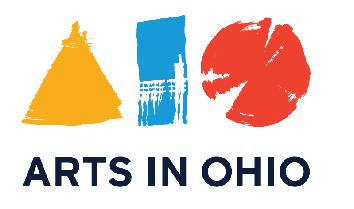


Happy 75th anniversary, Chamber Music Columbus!
Happy 75th anniversary, Chamber Music Columbus!
Happy 75th anniversary, Chamber Music Columbus!
Thank you for all you do for the arts in Ohio.
Thank you for all you do for the arts in Ohio.
Thank you for all you do for the arts in Ohio.









 Photo: Ian Crumpler
Design: Formation Studio
Photo: Ian Crumpler
Design: Formation Studio






































































